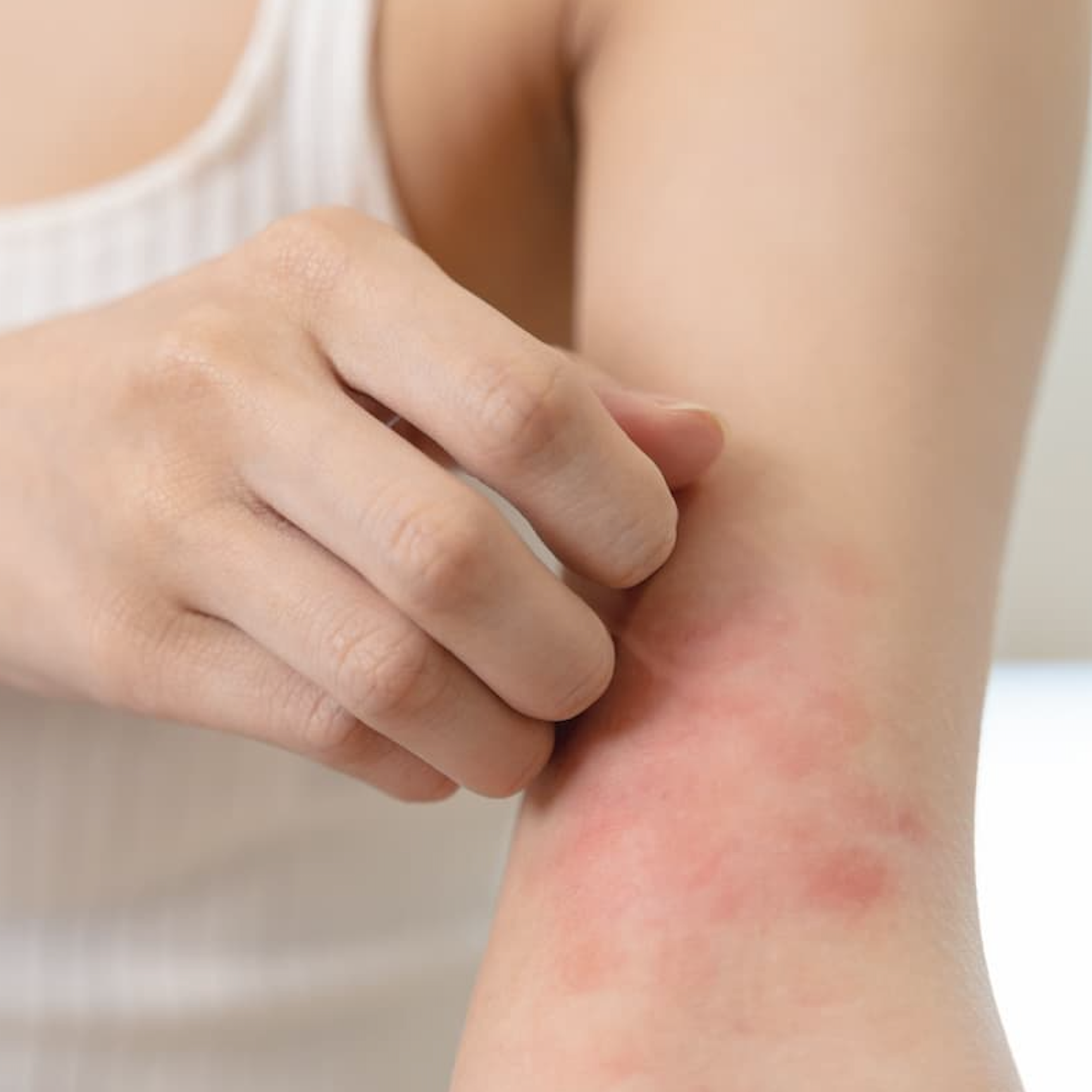7 Summer Skin Conditions You Might Mistake for Eczema
From heat rash to fungal infections, summer skin conditions can fool even experienced patients with eczema.
By
Lana Pine
| Published on July 21, 2025
3 min read
Credit: Adobe Stock/Pormezz

When warm weather hits, your skin may flare up in uncomfortable, itchy patches. If you’ve dealt with eczema before, your first thought might be, “It’s back.” But not every red, dry or bumpy rash is eczema. In fact, several skin conditions that become more common in summer can mimic eczema — and may need different treatment.
Here are seven common summer skin issues that could be mistaken for eczema, and how to tell them apart.
1. Heat Rash (Miliaria)
What it is: Heat rash develops when sweat gets trapped in your pores due to hot, humid weather or tight clothing. It often shows up as tiny red bumps or clear blisters, especially in skin folds.
How it’s different: Unlike eczema, heat rash is usually short-lived and not caused by chronic inflammation. It’s also more likely to appear suddenly during intense heat or after exercise.
2. Contact Dermatitis
What it is: This rash appears after your skin comes in contact with something irritating or allergenic — think poison ivy, sunscreen or certain metals.
How it’s different: Contact dermatitis is triggered by a specific substance. If you can trace your rash to a product or outdoor exposure, this could be the cause. It usually clears up once the irritant is removed.
3. Tinea (Ringworm)
What it is: Despite the name, ringworm has nothing to do with worms. It’s a fungal infection that creates round, itchy patches with a raised, scaly border.
How it’s different: Tinea often forms in a ringlike shape with clearer skin in the center — unlike the more diffuse appearance of eczema.
4. Swimmer’s Itch (Cercarial Dermatitis)
What it is: A reaction to microscopic parasites found in lakes or ponds, swimmer’s itch can cause red, itchy welts hours after a swim.
How it’s different: The rash is intensely itchy and typically appears in exposed areas like arms and legs, not in the creases where eczema tends to cluster.
5. Polymorphous Light Eruption (PMLE)
What it is: PMLE is a sun-triggered rash that tends to show up on sun-exposed areas like the chest, arms and legs.
How it’s different: PMLE often appears after your first sun exposure of the season and fades with sun avoidance or gradual tolerance buildup. Eczema typically doesn’t improve with UV avoidance.
6. Bug Bite Reactions
What it is: Insect bites — from mosquitoes, gnats or bedbugs — can cause itchy red bumps or welts.
How it’s different: These bumps are often isolated and show up in exposed areas, sometimes in a linear pattern. Eczema tends to be patchy and symmetrical.
7. Folliculitis
What it is: Folliculitis is inflammation or infection of the hair follicles, often triggered by sweat, friction or shaving.
How it’s different: It may look like clusters of red pimples or pustules, especially on areas like the thighs, buttocks, or upper arms. Eczema tends to be drier and flatter.
When in Doubt, See a Dermatologist
If a rash appears suddenly, spreads or doesn’t improve with over-the-counter creams, it’s best to get it checked out. Eczema is a chronic condition, while most of these summer skin issues are short-term and often need different management.

